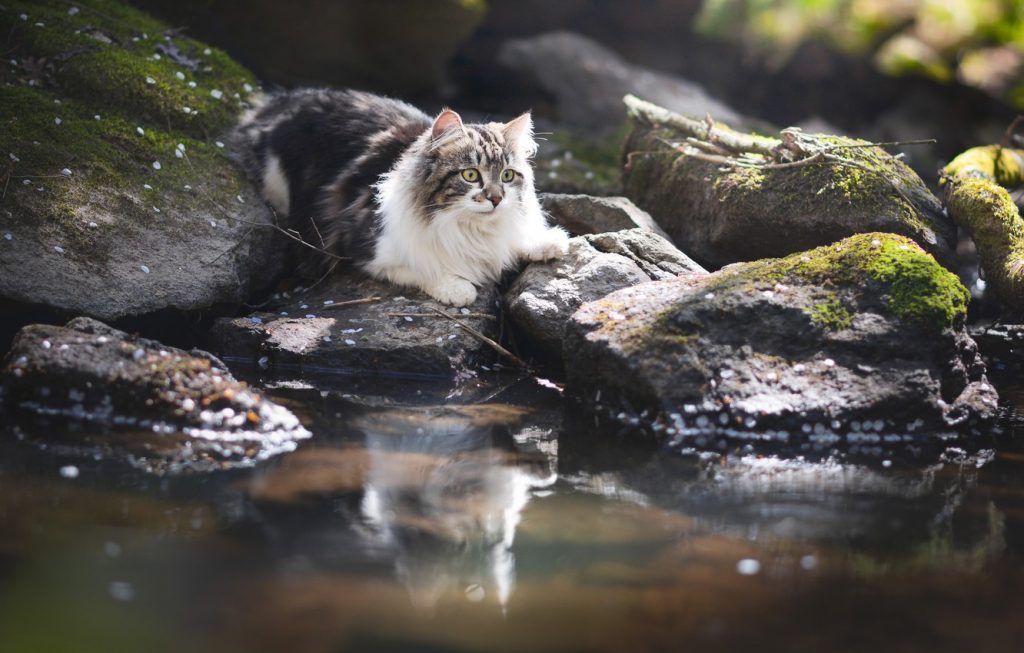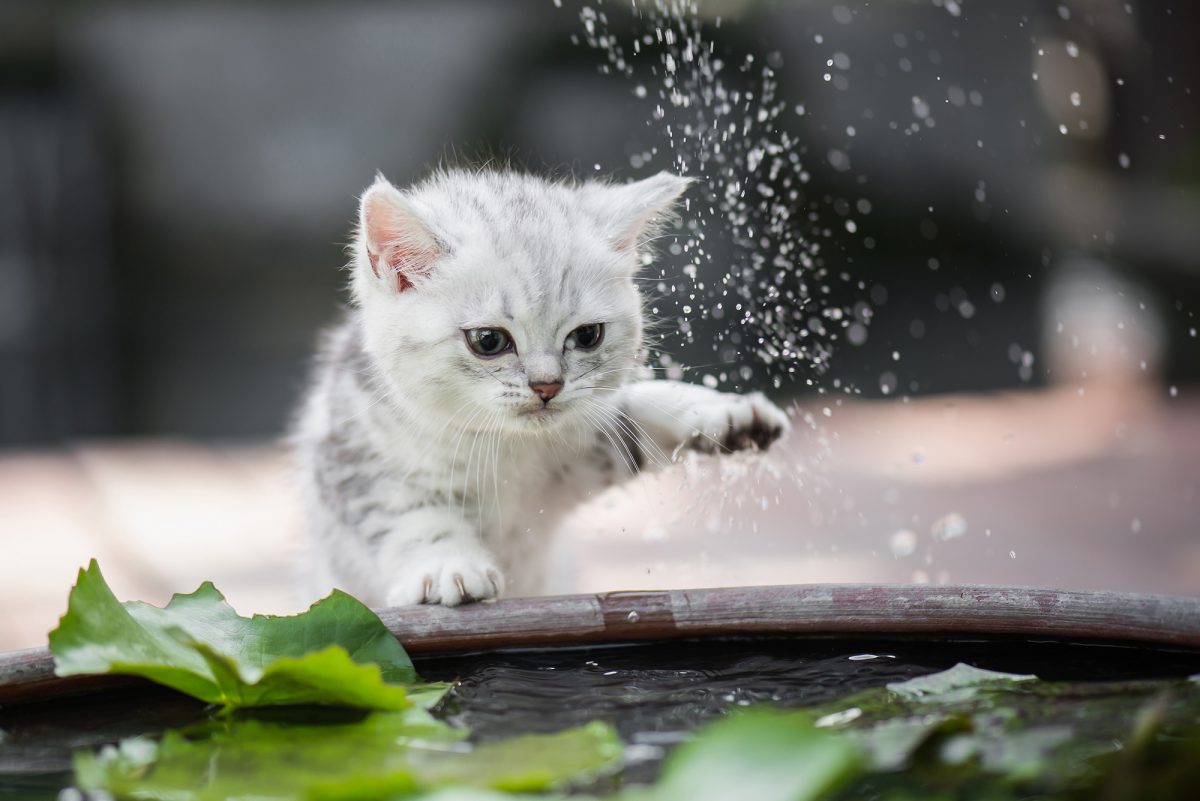How to teach a cat to water? No, this is the second question. First: is it necessary to accustom her to water? If your cat does not walk on the street, does not regularly climb into fuel oil or flower beds, leaving traces on the snow-white carpet, then bathing it is not necessary. Cats are bathed in two cases: after heavy pollution and before responsible exhibitions. The rest of the time, this animal is able to take care of itself. Clean by nature, these beauties themselves carefully tidy themselves up, licking their fur for hours.

Nevertheless, there are cats who not only do not refuse water procedures, but also climb under the stream of water themselves or jump into the water. In addition, in emergency situations, cats, including large ones (lions, tigers), are able to jump into the water and swim the distance they need, even if they have never done this before, in any of their nine lives.
If your cat is going to participate in exhibitions or a hectic life in a summer cottage, prepare her for bathing ceremonies from childhood. Keep in mind that some breeds are even friendly to water, some are tolerant, but with some this water trick will not work at all. Do not torture the kitten if it falls into the last category, do not force him to bathe.

Where to start water training? Let the kitten get used to the sound of water: turn on the water in a thin stream and leave the kitten to play in the same room. A curious cub will definitely turn its attention to the running water and decide to try it with its paw. If he likes it, then, while playing, he will make friends with water and will not be afraid of it. A little later, try putting the kitten in the bath and moistening its coat with water. At the same time, say kind words to him, calm him down, distract him with toys or treats. Let the water at first be quite a bit – just to slightly moisten the paws. As an alternative, you can start washing your kitten’s paws after each visit to the toilet and gradually wet the fur in other places, accustoming him to the feeling of wet wool.

Watch the water temperature, let it be no higher and no lower than 40 degrees.
If the cat is already calmly standing in a container of water, and not jumping out of there with a bullet, then day by day try to increase the depth. Reward the cat even for the smallest success, say kind words to her. Very patient owners claim that this is how you can gradually teach a cat to be in chest-deep water and even swim. Once again, very patient hosts.

Important recommendations: once you decide to wash your cat, use a professional quality shampoo for cat hair so as not to cause allergies in the animal. Be careful not to get water in your pet’s ears. From this, the cat can begin otitis, which threatens deafness. Never let your cat out of your sight for a minute if it is already swimming and playing in the water.
If your cat flatly refuses to bathe, do not worry. Accustoming her to combing is an equally important procedure for the health and appearance of the animal, and the process of getting used to it is no less difficult.
